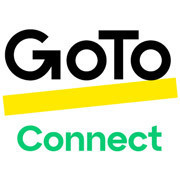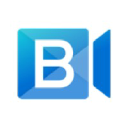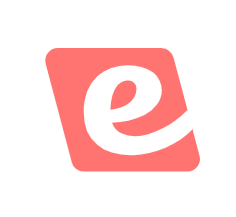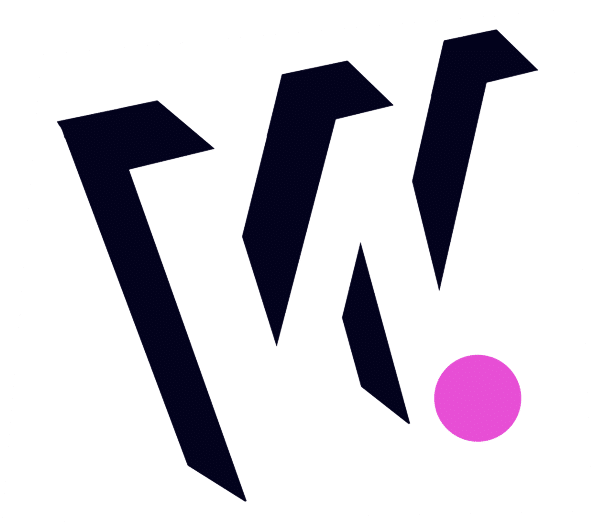







































Short for “web-based seminars”, webinars are virtual presentations, workshops, lectures, talks, and other events for an intended audience. Webinars are used to teach, train, or demonstrate a topic and most recently, market and sell products and services. Depending on whether they’re live or pre-recorded, webinars can be interactive, with participants being able to interact with the host to ask questions, give feedback, participate in polls, and talk to other attendees among others.
Taking off from this, webinar software is a tool or platform that is used to create, broadcast, and manage webinars, track and analyze their performance, as well as monetize their content. It can be a local program that is downloaded and installed on a computer or a cloud-based app that streams webinars from an internet browser.
Apart from broadcasting webinars, the software lets webinar hosts and organizers manage attendee lists, send participants their credentials and login information to access the sessions, and allow collaboration among hosts and attendees.
Webinar software allows you to be virtually present wherever your audiences are and whenever they want to consume content. When it comes to the benefits of webinar software, this barely scratches the surface.
Webinar software has come a long way since the earliest webinar solutions were launched in the 1990s. Along with this evolution came a host of use cases that have proven to work among those who have used it.
Marketing and Promotions
The use of webinars in marketing and promotions is in line with the growing trend of providing valuable and useful content to your target customers, whether you’re a B2C or B2B business. The whole point of using webinar software is information and content dissemination – from complex ideas to casual topics.
Webinar software can play a role at every stage of the marketing funnel.
Webinars have proven to be an extremely effective marketing and promotions tool that it’s become a staple tactic among many businesses across a number of industries.
Education
Webinars are an effective teaching tool, especially in this day and age when e-learning is rapidly growing. As most people are visual learners, webinar software provides media-rich virtual classrooms that allow teachers, instructors, and coaches to walk audiences through a lesson effectively with the use of visual aids such as slide presentations and videos. Whether it’s used by big institutions such as schools, colleges, and universities, or by small learning hubs or solo instructors, website software facilitates more engaging and effective education. Another benefit is it expands potential the pool of potential enrollees and students beyond geographical boundaries.
Meetings and Conferences
While webinars are oftentimes used to broadcast content to a public audience, this doesn’t mean that they can’t be utilized for private and internal events such as company meetings and industry conferences. Why spend thousands of dollars on renting a venue if you can use webinar software and still engage your audience and get your message across at a fraction of the cost without diminishing the impact (as long as you do your webinar the right way)? Organizations of all sizes can use webinar software to conduct important meetings and broadcast company-wide announcements.
The beauty of webinar software is the content can be automatically recorded, stored, and archived. The recorded webinar becomes an on-demand reference that employees can access at a later time if and when needed. This self-serve content becomes a long-term resource for internal communication, education, and awareness.
Meetings and conferences streamed via webinar software are especially beneficial to multinational organizations as it eliminates the need for interested participants to travel to a physical venue.
Increase Audience Engagement
Webinars are highly marketable events. With the right strategy and tactics, it’s easy to get your audience excited. Knowing that an announcement, meeting, conference, lecture, or presentation will be broadcasted lives adds gravity to the event. An effective pre-webinar promotion will make participants feel that they going to be part of something important, exciting, and newsworthy. It also predisposes your audience to be more participative during the webinar itself.
Additionally, presenters can leverage webinar software features such as surveys, polls, and live communication to pique interest. These make viewers feel more involved, increase reception, and help ideas sink in better.
Webinar software features also create memorable milestones in your presentation and “sticky” takeaways, amplifying the effect of your presentations even after they ended.
Highlight Credentials
Very few online tools can beat webinar software in terms of building authority. Webinars provide individuals, companies, and organizations a platform to build thought leadership by highlighting their track record, demonstrating expertise in niches, disciplines, and areas they are in, and providing value-in-advance with relevant and helpful information. Webinar software can also be used to create shareable multimedia content, which can jumpstart positive word of mouth for your brand.
Anyone and everyone who wants to disseminate information, create content, and share valuable and useful information can use webinar software. However, it is particularly useful for the following segments:
Marketing and Sales Teams
The catchphrase “Content is King” has been dominating the world of online marketing for years and for a good reason. Customers are now more discerning and hard-sell marketing and sales tactics aren’t as effective as they were before. Relationship building is important in facilitating the flow of the buyer’s journey.
This is where webinar software comes in as it helps marketing and sales teams pitch products and services in a way that provides value (answers the customers’ question “what’s in it for me?”). Webinar software is highly customizable, which means marketing and sales messages can be personalized to address specific needs and pain points of the customers you’re engaging with.
Webinar tools can also integrate with other digital marketing and sales platforms, making it convenient to add branded assets into presentations.
Educators
Teaching and learning are concepts that are no longer confined within the four walls of physical classrooms and webinars have made it possible for e-learning to progress to what it is today. Boasting seamless integration with a number of learning management systems (LMS), educators can conduct webinars live for a learning experience that’s closer to a face-to-face setting and at the same time, upload recorded sessions so students can learn at their own pace.
A number of LMS have built-in webinar software with learning/teaching-specific functionalities such as quizzes and note-taking features, but there are also standalone webinar tools made specifically for educators that can be easily connected to various LMS.
Personal Development Coaches
Closely related to educators are personal development coaches. These include life coaches, career coaches, mental health practitioners, and relationship therapists just to name a few. Instead of meeting face-to-face or asking clients to come to their office which can be a friction point, coaches can take advantage of webinar software to conduct client sessions virtually. Webinars may also decrease the frequency of cancellations and postponements since some external factors are eliminated that may prevent clients from proceeding with their scheduled appointments such as traffic and inclement weather.
Content Creators and Influencers
At some point, content creators and influencers need to differentiate themselves from others who are in the same niche as them. One of the ways to do this is to use webinar software to cultivate an engaged group of followers and community through informative and useful content that will reward them with quick wins.
There’s no cookie-cutter approach to using webinars. In fact, webinars are most effective when they’re used in line with specific objectives.
Different types of webinars require different types of software. Here are some of the most common webinar software classifications that you may encounter.
Evergreen Webinar Software
This type of webinar hosting technology allows you to create online events featuring content that is of current and future relevance. In other words, this is a webinar platform for broadcasting webinar topics that are always current.
The advantages of an evergreen webinar include:
Evergreen webinars can be live or pre-recorded.
Automated Webinar Software
Automated webinar software gives you the ability to publish pre-recorded webinars that are only accessible at pre-determined dates and times. This “limited time” approach has a number of benefits including:
On-demand Webinar Software
Similar to an automated webinar solution, on-demand webinar software broadcasts pre-recorded webinars. The difference is, that instead of giving viewers limited access during pre-set schedules, on-demand webinar technologies make pre-recorded content available all the time.
Using on-demand webinar software has the following perks:
Just-in-time Webinar Software
A just-in-time webinar program or app is used to stream pre-recorded webinars that offer interested participants the option to join a session that starts just minutes after they land on the registration page (hence, the term “just in time”). This schedule is dynamically created every time someone visits a webinar’s landing page and is displayed together with other schedules that will happen on later dates.
A relatively new webinar technology, just-in-time webinars are growing in popularity due to many positive reasons:
There are a number of all-in-one webinar platforms that possess the functionalities of the four solutions discussed above. If you think you will be using all of these webinar software types at one point, opting for a webinar app that has all these functionalities could be your best option.
Understanding the common features of a webinar solution is the first step before getting one. This information will assist you in narrowing down your webinar solutions based on their capabilities, ensuring that the software you select is capable of carrying out all the functions you need.
Enumerated below are the typical features of webinar software. Examine this list, choose the attributes that best suit your requirements, then use these as the criteria when choosing which platform to purchase or subscribe to.
Likewise, outlined below are additional webinar software features. These are nice to have and not having these functionalities won’t prevent you from launching your first webinar. However, they do give you additional capabilities that you might find useful as you become a more expert user in the future.
Personalized Branding
Whether you’re a business or an individual, branding is crucial if you want your webinars to generate awareness, build affinity, and generate recall. This is especially important if you’re going to use webinars as a core marketing and promotions tactic. It allows you to attach your company or your name to the ideas, products, or services that you are presenting. Personalized webinars should be a non-negotiable feature when choosing webinar software, but this may not be available for free versions.
Role Based Access
Similar to face-to-face events, managing participant behavior during a webinar is vital to ensure the smooth flow of the discussion. Role-based access enables hosts to restrict the use of certain tools based on roles. This guarantees that audience interaction always takes place at the speaker’s discretion. It also directs the participants’ attention where the speaker wants it at any given moment. For example, presenters may mute participants, disable participant-to-participant conversations, and limit screen sharing to the host and co-hosts, just to name a few.
Recording
This feature enables webinar hosts to record their sessions for subsequent viewing. Recorded webinars can be published on a personal website or elsewhere on the internet for anyone to watch or download at a later time. Some websites even include payment gateways, requiring visitors to pay a fee before getting access to a recorded webinar. This capability also extends the shelf life of content by allowing live webinars to be repurposed as pre-recorded automated, on-demand, and just-in-time events.
Registration
A vital component of a successful webinar is an easy and seamless registration process. A built-in registration feature allows interested participants to sign up for a webinar within the app and enables organizers to check attendance without leaving the platform. Some webinar software also allows hosts to create landing pages, send collateral materials, and set up automated email sequences (reminders, etc.) within the app.
Attendee Live Chat
One of the easiest ways to encourage engagement and audience participation during a webinar is through live chat. There are three primary ways live chat could work: private messages sent to the presenter, public messages visible to the entire group, and private messages sent to other attendees. Hosts can use live chat to get gather questions for the Q&A portion of the webinar and provide an avenue for attendees to converse among themselves to make the discussion richer.
Polls and Surveys
Real-time audience polls and surveys provide the speaker with specific talking points that enable them to adapt their message based on the responses of the attendees. This gives presenters cues to pivot the content of their presentation within the webinar itself (applicable for live webinars) in a way that is more relevant and will resonate more with the attendees. Additionally, it allows participants to rate the webinar and give their feedback, comments, and suggestions during or just before the session ends.
Event Analytics
Tracking key performance metrics before, during, and after a session is important in improving the performance of your future webinars. Events analytics offers insights into several webinar performance areas such as opt-in rate or registration rate, attendance rate, drop-off rate (and where in particular during the session participants leave), completion rate, conversion rate (if you offer products and services during the webinar), and download rate (if you send downloadable materials) just to name a few. This will give you an idea of what you did well and can iterate in succeeding webinars, and what needs to be tweaked. A number of webinar apps provide a dashboard that gives you a bird’s eye view of how your webinar is doing at a glance.
Attendee Reports
This feature collates attendee information for analysis. The data you collect can be utilized to segment leads that can be nurtured via follow-up emails and other forms of communication. If you gather demographic information, you can tailor-fit your post-webinar outreach based on the attendees’ profiles as well as perform in-depth audience analysis.
Social Media Integrations
One of the best ways to promote your webinar to boost its registration rate is through social media. Webinar software that easily integrates with various social media platforms allows you to get more eyeballs for your event as well as simultaneously stream your content across different channels which boosts viewership. Content broadcasted on social media is also easily shareable, expanding the reach of your content beyond your initial target audience. Plus, social media integration generates advanced interest for your subsequent webinars.
Software Integrations
This feature enables you to connect your webinar software with other apps for added functionalities. For instance, if you’re currently using customer relationship management (CRM) software), you can connect your webinar platform so all registrants are automatically funneled into your email list. You can also connect your webinar solution to your website or landing page builder to increase visibility on your owned web assets. Some webinar apps can also connect with more industry-specific tools such as digital asset management software, learning management systems, and corporate learning management systems.
Not all webinar software options are created equal. When choosing a webinar app, especially if you’re paying for it, it’s important to look at key factors to ensure that you get your investment’s worth and accomplish your webinar objectives.
Here’s a checklist of the important elements you should evaluate when picking which webinar platform to use:
Video Quality
Even the best conceptualized and well-put-together webinar will fail if the video quality is subpar. The same goes for audio. As an audio-visual medium, good picture and sound quality are of utmost significance for webinars to have the maximum impact. Imagine if your webinar’s attendees are seeing a pixelated video of the speaker. Other red flags to look out for are video lags, sound volume, audio cracking, and unsynchronous audio and video. Look for a webinar software that can stream at least HD ready (1280 x 720 pixels) resolution.
Ease of Use
While you don’t want webinar software that is too thin in terms of features, you also don’t want to select a platform that is too complex to use. You should be able to utilize a webinar app right off the bat without needing help from your IT team. Look for a webinar solution that has a user-friendly user interface, is simple to use, with built-in functionality prompts, and has well-documented FAQs and user resources. A good webinar solution should be user-agnostic that even beginners should be able to use it without too much figuring out.
Screen Sharing Options
The ability to share screen should be one of the bare minimum criteria when choosing webinar software. Screen sharing capabilities can vary across different webinar platforms. For example, some webinar tools will only allow you to share either your screen or your video, share them simultaneously, or allow two presenters to broadcast their screens at the same time.
Customer Support
As with any other software as a service (SaaS) technology, pick a webinar solution from a provider that offers good customer support via multiple channels. This ensures that you get the help you need if and when you encounter technical issues with the software. You can also benefit from added customer service support such as a dedicated customer service representative assigned to your account, a rich library of user resources, and new user onboarding and training.
Video Conferencing Software
Webinar software and video conferencing software share a number of features and functionalities. Both connect people via a video stream using the internet and make additional tools available to facilitate communication. The main difference is video conferencing software typically caters to small groups while webinar software can accommodate thousands of attendees and broadcast information for public consumption. Webinar apps also provide more capabilities specific to presenting compared to video conferencing platforms that are usually used for meetings.
Virtual Event Platforms
Webinar solutions and virtual events platforms both create an interactive virtual experience for their participants, but while they resemble each other in many ways, they also differ in several areas, mainly stemming from the purpose they were created for. Webinar solutions are usually meant to stream one event at a time while virtual event platforms – because they are designed to replicate on-site events – can broadcast several events simultaneously. Virtual event platforms allow attendees to jump from one session to another. While webinars are usually focused on audio-visual presentations, online event platforms have other interactive functionalities such as interactive exhibits, web booths, and other types of virtual spaces.